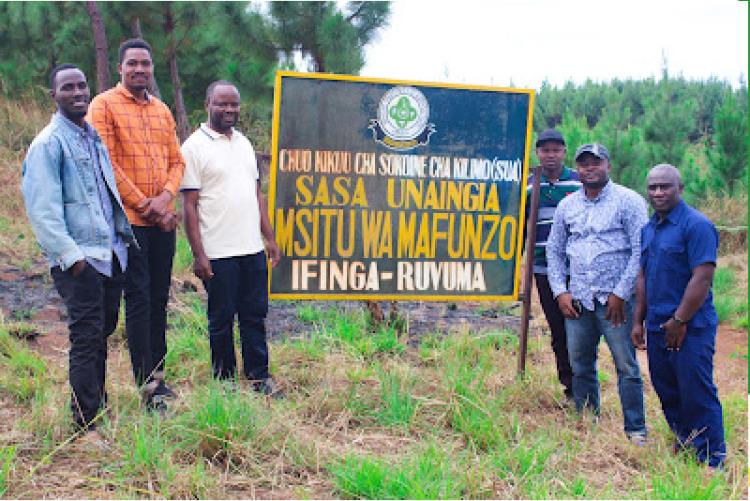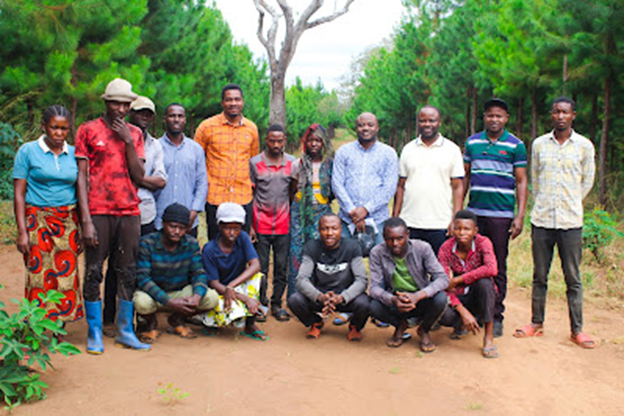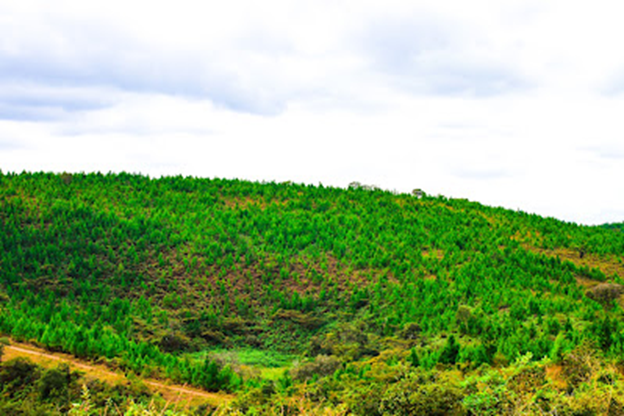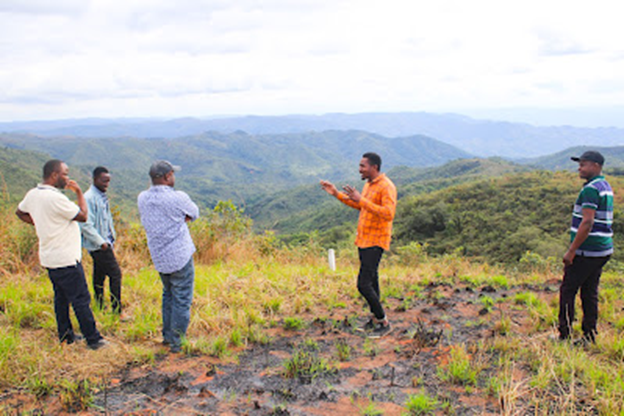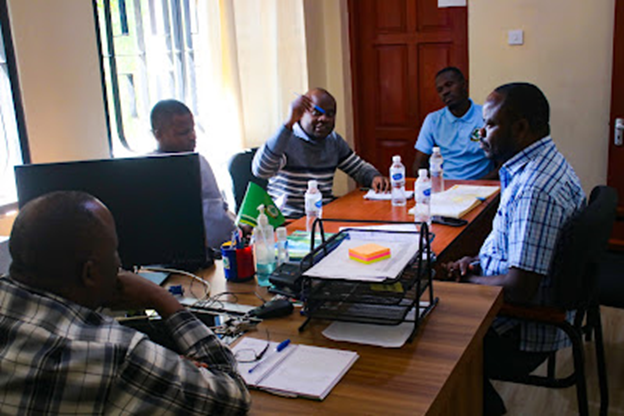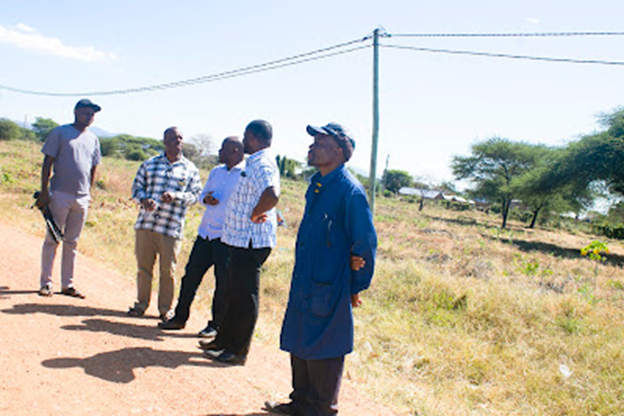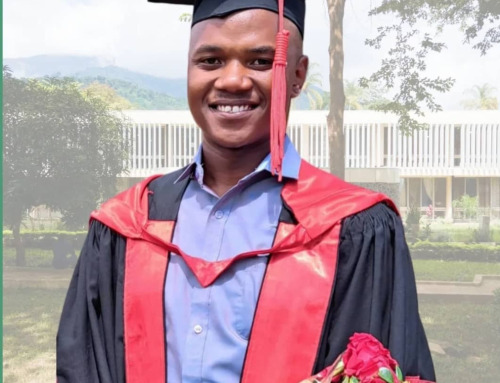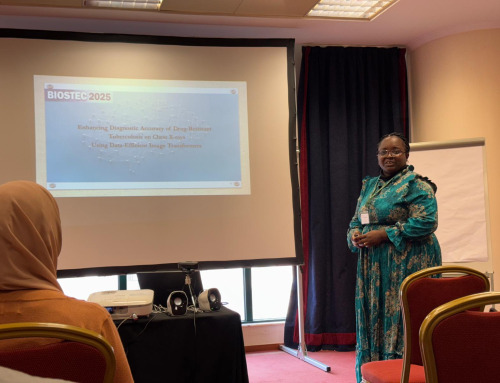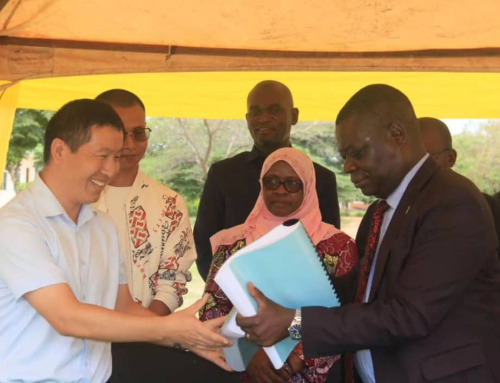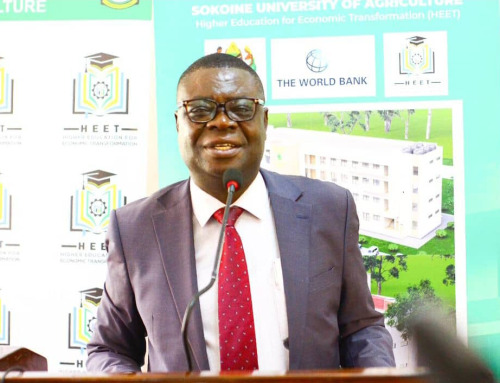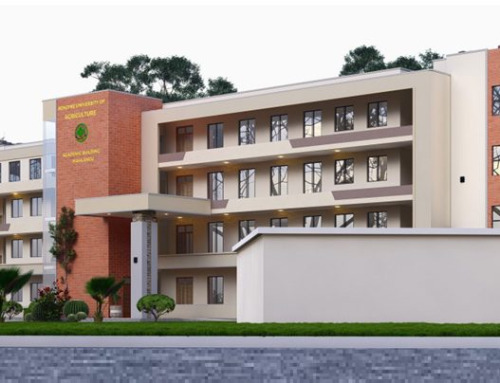The Monitoring and Evaluation (M&E) Team of the Higher Education for Economic Transformation (HEET) project from Sokoine University of Agriculture (SUA) recently visited the Ifinga Training Forest located in Madaba Town Council in Ruvuma Region, and the Mizengo Pinda Campus located in Katavi Region.
The team, led by Dr. Emmanuel Malisa, the M&E component leader of the HEET project, and including members Jumanne Habibu and Tryphone Ngoja, began their work by visiting the Ifinga Training Forest. They inspected areas where trees have been planted and the construction site of a fire detection tower in the plantation.
Dr. Malisa stated that the focus of the M&E component is to monitor and evaluate progress towards the project’s main objective. The component collects and analyzes various data, compiling reports for discussion in university meetings, and ultimately presenting them to the Ministry of Education, Science, and Technology.
Dr. Malisa indicated that the team gained insights into how SUA manages the training forest, which was established in 2018 and is crucial for the practical training of students. He noted that the forest existed before the HEET Project under the jurisdiction of the College of Forestry, Wildlife, and Tourism, but the project has significantly boosted its development. For the 2023/2024 season, the HEET Project has expanded the planted area from 278 hectares in the previous season (2022/2023) to 312 hectares, an increase of 34 hectares, equivalent to 12%. Additionally, the nursery currently holds 155,000 seedlings, enough to plant a 140-hectare area. Combining this with the initial 34-hectare increase, the HEET Project’s contribution to the forest reaches 63%.
Dr. Malisa said the initial goal was to plant 500 hectares, but up to now, only 312 hectares have been planted, and therefore, the planting rate needs to be increased. He indicated that his team would identify challenges faced and suggest ways to rectify them so that the exercise can proceed smoothly. “…and this is the main goal of monitoring; to provide early warning so that the project can remain on track with its plan as outlined in the project document…” said Dr. Malisa. He mentioned transportation logistics for laborers and seedlings as one of the challenges, which delayed planting until October instead of the recommended July, leading to falling short of the target.
In addition to visiting the Ifinga Training Forest, the HEET M&E Team also visited the Mizengo Pinda Campus (MPC) of Sokoine University of Agriculture in Katavi Region. There, they met with staff and students to gauge their understanding and involvement in the HEET Project, discussing challenges and precautions associated with it.
Dr. Malisa mentioned that the staff at the campus showed good understanding of the HEET Project, particularly regarding gender issues, and were satisfied with their involvement in the project. The Acting Deputy Principal (Planning, Administration, and Finance), Professor Jeremiah Makindara, noted the establishment of a Gender Desk and a HEET Project Coordination Committee at the MPC. Furthermore, Mr. Gabriel Mruma, a university staff member at the MPC, highlighted his involvement in the environmental and social impact assessment of the project, including identifying areas for building various facilities under the HEET Project.
Regarding students, Dr. Malisa mentioned there are still challenges in their understanding of the project, but team members, Messrs Habibu Jumanne and Tryphone Ngoja took the opportunity to provide explanations about the project’s benefits and how it will improve infrastructure at the campus.
In conclusion, the HEET M&E Team recommended the establishment of a structured communication mechanism at the MPC to ensure that all staff and students, including those not present at various meetings, receive updates about the HEET Project. They also advised students to regularly visit the university’s website for updates on various university activities, including the HEET Project.

